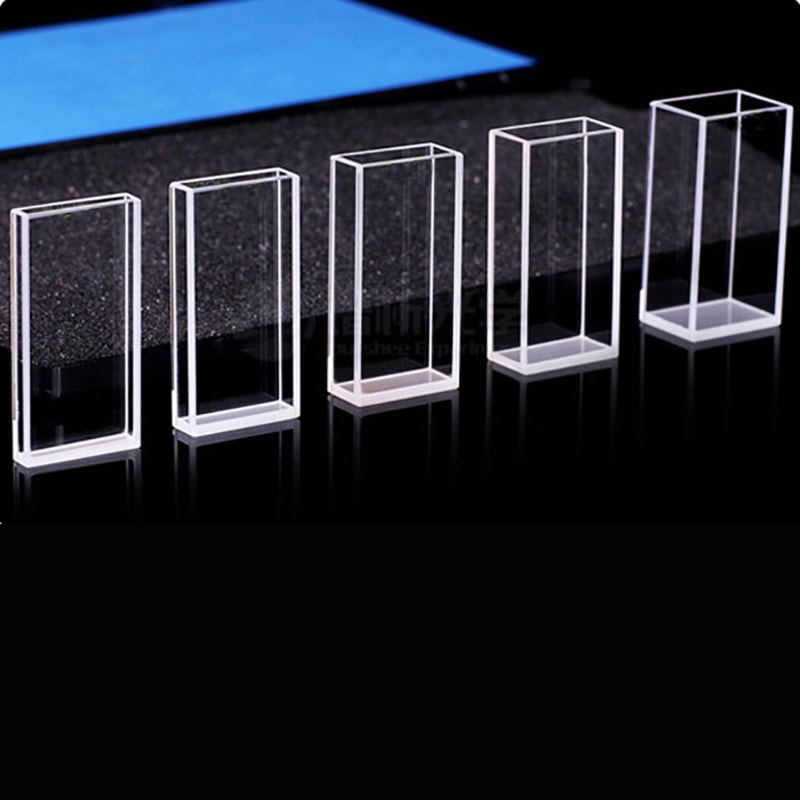The spectrotometry technique is the cornerstone of scientific discovery and a technique that reveals the mysteries of light absorbance and transmittance across specific wavelengths. Cuvettes are the vessels at its core, which holds samples to be analyzed. It might appear to be simple, yet their intricate design, from the length of the paths for cuvettes to the choice of material, is what unlocks accurate details about the substance’s concentration and the purity of the substance. Explore this fascinating universe, where cuvette dimensions and dimensions affect the outcomes of every test.
Power of Cuvette Pathlength
Imagine a beam of light passing through a sample what happens depends heavily on the cuvette’s path length or the distance at which light passes through the liquid. For many labs, a cuvette of 1 cm is the ideal length because it is able to strike the right balance between sensitivity as practicality. Why is this so important? The longer the distance, the more light is absorption and amplifies the signal in small samples. But for concentrated solutions like proteins or nucleic acids a shorter path length can be a game-changer. This reduces the quantity of dilution necessary which saves precious samples as well as reducing preparation times. The key takeaway? Matching path length to samples’ requirements is a fine technique that improves reliability.

Image credit: cuvet.co
Cuvette Dimensions: A look at more than what meets the eye
The size of the cuvette isn’t only about how much liquid fits inside it’s about how it interacts with the spectrophotometer. Cuvettes come in different sizes and shapes, which are suitable for particular needs. Semi-micro cuvettes are an example due to their smaller size and thicker wall thicknesses are made to handle small volumes of samples. Think about a few nanoliters or a rare biological extraction. The thick walls let light flow through the sample without even wasting a single drop. This is a huge improvement over a conventional cuvette. It requires smaller steps to pipette, is less susceptible to errors and produces results that are reliable. It’s a clever modification that makes it clear that size isn’t just an number it’s strategy.
The 1 cm Path Length Cuvette: A Lab Favorite
Why is the cuvette that has a 1 cm path length is so well-liked in a variety of experiments? It’s the ideal choice for biological tests where samples are not plentiful and milliliters count. This traditional design provides constant absorbance measurements, without overpowering the detector. It’s not the one that is universally applicable. It’s not a single-size hero. It is important to choose the appropriate instrument, not the one you feel most comfortable using. A wrongly matched instrument is similar to a cuvette which isn’t well-matched.
Material Matters Beyond Size and Path
Cuvette dimensions tell only half the story material choice seals the deal. Glass and quartz cuvettes are notable due to their excellent transmission rate, letting light zip through with little interference. They’re strong and durable, which makes them reusable. This makes them perfect for spectroscopy. Plastic cuvettes are also affordable and convenient. They don’t require clean-up or cross-contamination. Simply utilize the cuvettes and discard. These are excellent for aqueous tests or quick DNA/RNA tests. The price? Lower accuracy at certain wavelengths. Quartz is the most preferred material for those who are adamant about purity, whereas plastic is the choice of the more pragmatic.
Perfect Practice and Precision
The beauty of cuvettes lies in their versatility. With spacers, shorter paths can be utilized to handle concentrated sample. Larger vessels are suitable for bigger volumes. Every choice of length and size and the kind of material can have an impact on the experiment. This can affect the clarity of the result. The lab is measuring a rare, protein. A semi-micro cuvette which has a shorter pathway could be able to avoid the dilution issues and produce reliable results fast. If you compare that to an unwise cuvette swap during the experiment and the results are distorted, it’s no wonder. Small details make the biggest impact in the field of spectrophotometry.
Cuvettes are tiny but have a significant role to play. From the 1cm path length cuvette to custom dimensions which bridge the gap between sample and understanding. A cuvette that is right for you can transform a great measurement, regardless of whether you’re seeking purity or concentration, into a great measurement.
